Detectors JRA - latest achievements
It is time for a summary of the achievements of this JRA, which aims to develop two promising detector technologies to cope with the high cost and near unavailability of 3He.
NMI3, 10/12/2015
Neutron scattering facilities have, for many years, depended on the availability of 3He for a large fraction of their detector requirements. Within the last 2–3 years demand for 3He, driven largely by the US homeland security requirements, has lead to an unprecedented rise in the cost of 3He and its unavailability for all but the smallest of systems.
For neutron scattering facilities to function effectively it is thus crucial that alternative, cost effective detector technologies are developed. The Detectors Joint Research Activity (JRA) focuses on the development of two promising detector technologies which could alleviate the dire situation now facing the facilities as a result of the high cost and near unavailability of 3He. The main objective of this JRA is the development of detector technologies to replace 3He detector technology in neutron scattering applications.
For more information about the different tasks of this JRA please visit this page .
Achievements of each task
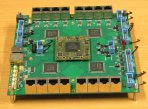
High field spectrometer
Development of scintillation detectors
- Hardware for two Wavelength Shifting (WLS) fibre-coded scintillation detectors
- Signal processing schemes for determining when and where neutron events occur
- Scintillation detector based on GS20 glass scintillator with a SiPM readout, scalable hardware, electronics and signal processing
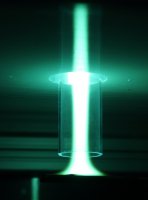
The plasma jet when boron is injected.
Development of gas detectors based on solid 10B converter
- Performance evaluation of B4C coatings produced by both magnetron sputtering and electron beam evaporation
- Macro-structured, boron-lined converter offering improved detection efficiency
- Promising technique for producing 10B films: thermal atmospheric plasma deposition
- 2D position sensitive test detector for evaluating the performance of films produced by alternative techniques
- Small test detector to evaluate coatings produced by magnetron sputtering and electron beam evaporation
- Concept detector based on a stack of large area MWPCs
- Concept detector using boron layers in conjunction with bulk Micromegas detector technology
Images
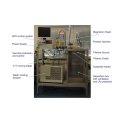
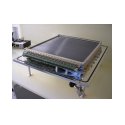
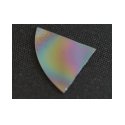
Latest news
New video: NMI3 – The benefits of European Collaboration
Learn about the benefits of this collaboration between the major neutron and muon facilities in Europe as well as the feedback of the European Commission, by the NMI3 Manager and Coordinator, scientists, and school organisers. Read more.
Call for proposals for funding of neutron and muon introductory schools
The deadline for applying for funding for Neutron or Muon Introductory Schools is January 24. The schools will be supported by the SINE2020 project. Read more.
New video: Mark Johnson on the impact of NMI3
Given that NMI3-II will finish soon it was time to take stock of the work developed over the last four years. Read more.



